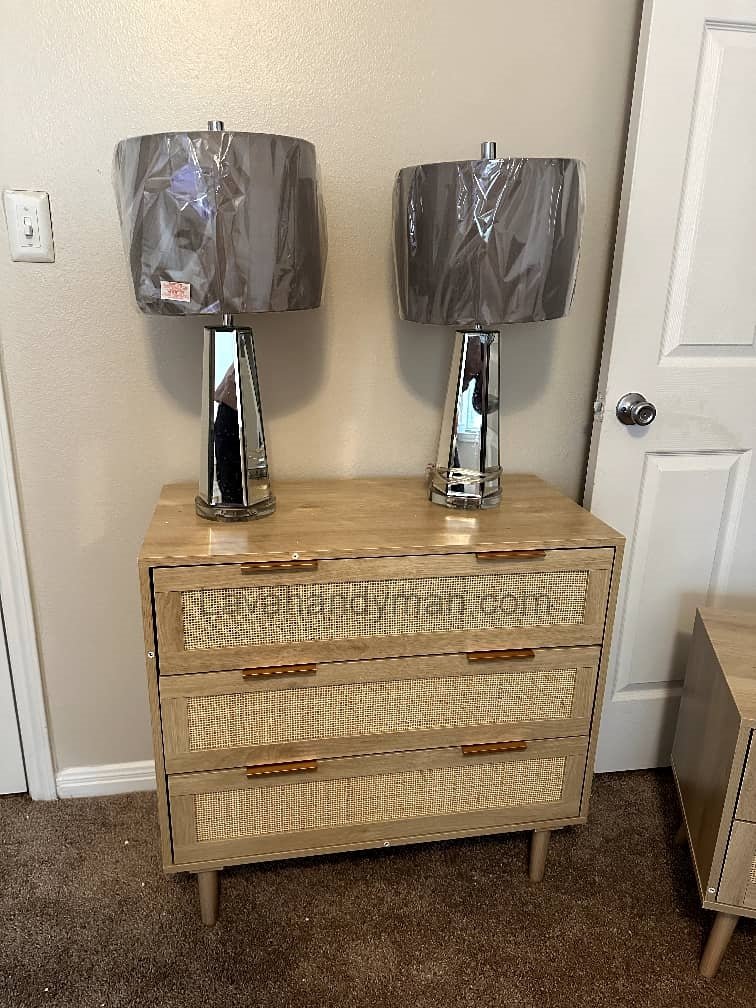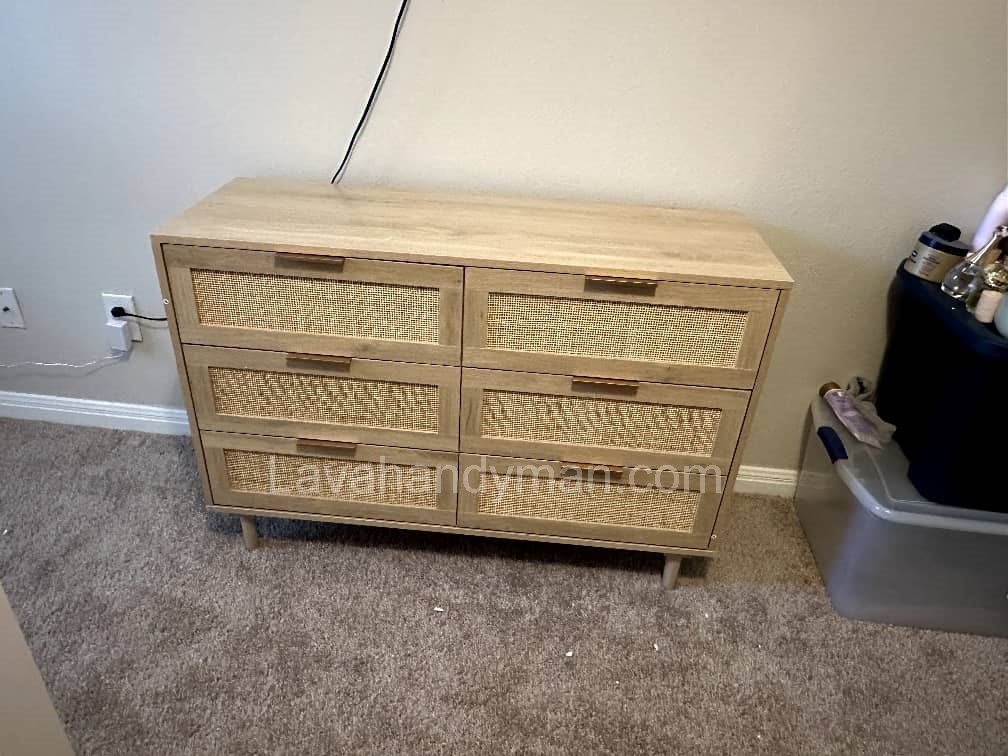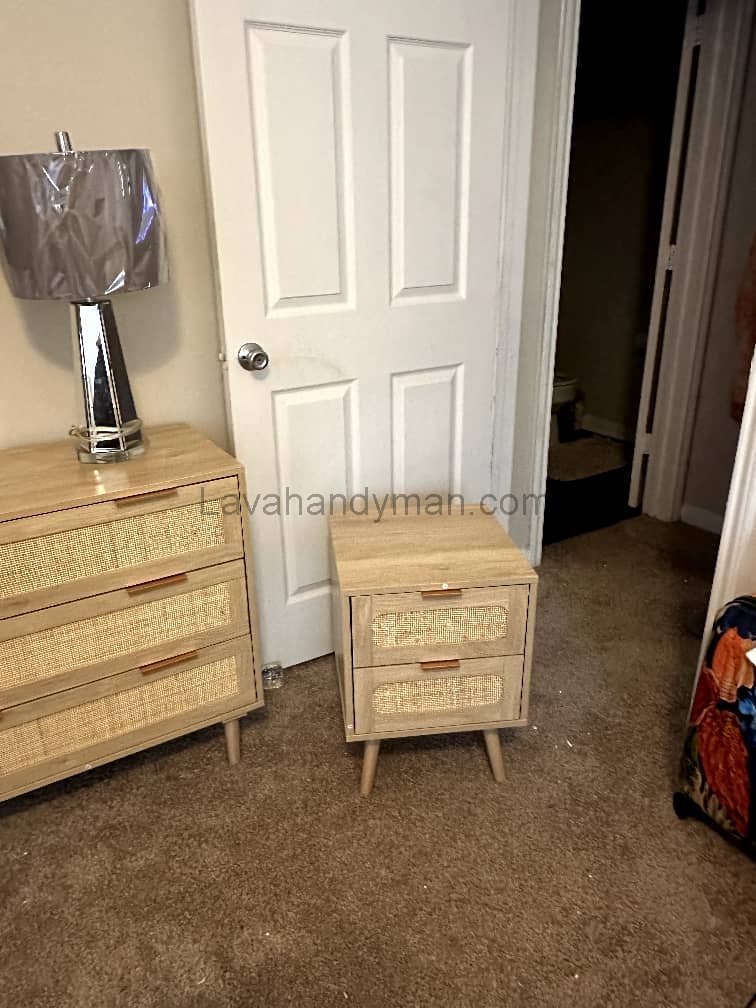A Complete Guide to Assembling Table and Chair Furniture
Introduction
With the rise of modern lifestyles and the expansion of online shopping, furniture assembly has become a practical and essential skill for many people. Unlike in the past—when furniture was delivered fully assembled—many manufacturers now offer products in flat-pack formats. This shift allows for reduced shipping costs, easier transport, and flexibility in handling.
Although assembling tables and chairs might initially seem technical and challenging, with the right tools, proper planning, and attention to detail, the process can be simple and even enjoyable. This article provides a step-by-step and comprehensive guide to correctly assembling tables and chairs, suitable for both beginners and experienced users.
A Complete Guide to Assembling Table and Chair Furniture

Chapter 1: Preparation Before You Start
Read the Instruction Manual
Before unboxing or starting the assembly, carefully read the product manual. It typically includes:
- A list of parts and hardware
- Required tools
- Step-by-step instructions
- Safety warnings and tips
Reading the manual prevents common mistakes and saves time during assembly.
Check and Sort All Parts
Once unpacked:
A Complete Guide to Assembling Table and Chair Furniture
- Lay out all wood, metal, and plastic components neatly.
- Sort screws, nuts, and fasteners and compare them with the manual’s checklist.
- Do not begin assembly if any parts are missing or damaged—contact the supplier instead.
Choose an Appropriate Workspace
Your assembly area should be:
- Clean, well-lit, and spacious
- Close to the final location of the furniture
- Covered with a soft surface like carpet or cloth to avoid damaging the pieces
Chapter 2: Tools Required for Assembly
Most tables and chairs can be assembled with simple tools. Here’s a list of essentials:
A Complete Guide to Assembling Table and Chair Furniture
| Tool | Purpose |
|---|---|
| Flathead & Phillips Screwdrivers | Tighten or loosen standard screws |
| Allen Key (Hex Key) | Used for hex bolts (often included in the package) |
| Rubber Mallet | Helps fit parts together without damaging them |
| Level Tool | Ensures surfaces are flat and balanced |
| Measuring Tape | For accurate spacing and placement |
| Pliers | Holding nuts or adjusting hardware |
| Electric Drill (Optional) | Speeds up the process, especially with many screws |
Tip: While basic tools are sometimes included in the box, higher-quality tools make the job easier and faster.
A Complete Guide to Assembling Table and Chair Furniture
Chapter 3: Step-by-Step Assembly Instructions
Step 1: Organize and Prepare Components
- Group similar pieces together by type or number.
- Keep small items like screws and washers in bowls or containers.
- Lay out your tools so they’re within reach.
Step 2: Assemble the Main Frame
For tables:
- Start by attaching the legs to the base or connecting bars.
- Lightly tighten screws to allow for alignment before final tightening.
A Complete Guide to Assembling Table and Chair Furniture
For chairs:
- Begin with the legs, followed by the seat base, then the backrest.
- Use a level to ensure all legs are even before fully tightening screws.
Step 3: Attach the Top or Seat Surface
- Position the tabletop or seat on the assembled frame.
- Use your hands to start screws or bolts to avoid stripping threads.
- Once aligned, fully tighten all fasteners using the proper tools.
Step 4: Final Tightening and Inspection
- Re-check all bolts and screws for tightness.
- Test stability by gently shaking or sitting on the chair.
- If there’s any wobble, recheck alignment and adjust as needed.
A Complete Guide to Assembling Table and Chair Furniture
Chapter 4: Technical Tips & Pro Tricks
- Hand-tighten first: Start all screws or bolts by hand to avoid misthreading.
- Use gentle lubrication: A small amount of petroleum jelly or light oil can help with tight bolts.
- Don’t force parts: If something doesn’t fit, double-check the orientation or use a rubber mallet—never hammer directly with metal tools.
- Avoid gluing parts unless permanent assembly is intended.
Chapter 5: Common Issues & Solutions
A Complete Guide to Assembling Table and Chair Furniture
| Issue | Likely Cause | Solution |
|---|---|---|
| Wobbly table/chair | Uneven legs or loose screws | Use a level, retighten screws, or add furniture pads |
| Screws won’t fit | Misaligned holes or wrong hardware | Loosen nearby parts, realign, or use correct screw size |
| Cracked wood | Excessive force or wrong tool | Use wood glue for minor cracks or request a replacement |
| Holes not aligned | Manufacturing defect or error in assembly order | Try adjusting orientation or contact manufacturer support |
Chapter 6: Safety Tips During Assembly
- Wear work gloves to avoid cuts or splinters.
- Keep tools away from children during and after assembly.
- Wear safety glasses if using drills or hammers.
- Lift heavy items with assistance to avoid injury.
- Ensure all parts are on a stable surface to prevent slipping or toppling.
A Complete Guide to Assembling Table and Chair Furniture
Chapter 7: Post-Assembly Care & Maintenance
Regular Hardware Checks
Inspect and retighten screws and bolts every 3–6 months. This prevents looseness and prolongs the lifespan of the furniture.
Proper Cleaning
- Use a soft, slightly damp cloth for wood or MDF surfaces.
- Avoid harsh chemicals or alcohol-based cleaners.
- For metal parts, consider using anti-rust spray or silicone protectors.
Environmental Protection
- Avoid exposing furniture to direct sunlight, heavy moisture, or rain.
- For outdoor furniture, use covers or store indoors during off-seasons.
A Complete Guide to Assembling Table and Chair Furniture

Chapter 8: Benefits of Self-Assembly
- Cost Savings: No need to pay for installation services.
- Skill Development: Improves your understanding of tools and construction.
- Sense of Accomplishment: Completing a project with your own hands is rewarding.
- Easy Maintenance: Knowing how it was assembled makes future repairs easier.
- Customization: You can adapt or tweak certain features during the process.
📦 Step-by-Step Guide to Assembling Table and Chair Furniture
Assembling furniture—especially tables and chairs—can be done easily and efficiently by following a few clear and structured steps. Below is a practical, professional guide to help you through the process.
A Complete Guide to Assembling Table and Chair Furniture
🔹 Step 1: Initial Preparation
1. Review the Instruction Manual
Before starting, carefully read the product’s instruction manual. It typically includes:
- A list of parts and hardware
- The correct assembly sequence
- Required tools and safety warnings
2. Unpack and Check Components
A Complete Guide to Assembling Table and Chair Furniture
- Open the packaging carefully and lay out all parts on a soft surface (like a blanket or carpet).
- Match all pieces and screws with the parts list in the manual.
- If any item is missing or damaged, stop and contact the seller before proceeding.
3. Prepare Your Tools
Have essential tools ready, such as:
- Screwdrivers
- Allen key
- Rubber mallet
- Measuring tape
- Level
Using quality tools speeds up the process and improves safety.
A Complete Guide to Assembling Table and Chair Furniture
🔹 Step 2: Assemble the Frame or Base
For tables:
- Attach the legs to the table frame or underside using the designated screws or connectors.
- Only partially tighten the screws at first to allow for final adjustments.
For chairs:
- Begin with the legs.
- Install the seat base, followed by the backrest.
- Ensure everything is aligned and level before fully tightening.
🔹 Step 3: Attach the Top Surface
For tables:
- Carefully place the tabletop on the assembled frame.
- Insert screws from below or the sides.
- Before final tightening, use a level to ensure a flat surface.
For chairs:
- Secure the seat base to the leg structure.
- Attach the backrest in the final step.
A Complete Guide to Assembling Table and Chair Furniture
🔹 Step 4: Align, Level, and Final Tightening
- Once everything is positioned correctly, fully tighten all screws and bolts.
- Use a level tool to ensure the surface is even and properly aligned.
- Gently test the chair or shake the table to check for any looseness.
- If there’s any wobbling, inspect and adjust the screws and legs as needed.
🔹 Step 5: Final Cleaning and Wrap-Up
- Wipe down all surfaces with a soft cloth to remove dust or fingerprints.
- Collect and store your tools properly.
- Keep any spare parts, extra screws, and the manual for future use (e.g., repairs or disassembly).
✳️ Additional Tips:
Assemble the furniture in the room where it will be used to avoid having to move large pieces after assembly.
Always hand-tighten screws first, then use tools for final tightening.
Avoid using metal hammers on wood—use a rubber mallet instead.
Do not move heavy parts alone—ask for assistance.
A Complete Guide to Assembling Table and Chair Furniture
🛡 Safety Tips for Assembling Table and Chair Furniture
Although assembling furniture may seem simple, neglecting safety precautions can lead to injury or damage to the pieces. Following these tips ensures your safety and the quality of the final product:
🔸 1. Use Personal Protective Equipment
- Wear work gloves to prevent cuts or contact with sharp edges.
- Always wear safety glasses when using power tools.
- Wear fitted clothing that won’t get caught in tools or screws.
🔸 2. Prepare a Safe and Suitable Workspace
- Choose a workspace that is well-lit, clean, dry, and spacious.
- Avoid assembling in crowded, damp, or near electrical equipment areas.
- Cover your work surface with a blanket, carpet, or foam padding to protect the furniture parts.
🔸 3. Use Tools Carefully and Correctly
- Use the right tool for each step (Allen wrench, screwdriver, rubber mallet, etc.).
- When using a power screwdriver or drill, avoid overtightening screws.
- Never use a metal hammer on wooden parts; it can crack or damage surfaces.
🔸 4. Safe Handling of Heavy Parts
- Do not lift large parts (like tabletops or chair legs) alone; always ask for help.
- When lifting, hold parts from underneath or near joints, not from fragile areas like tabletops or backs.
🔸 5. Keep Children and Pets Away
- Keep children and pets out of the assembly area.
- Small parts like screws, nuts, or washers pose choking hazards.
🔸 6. Assemble with Patience and Focus
- Never assemble while rushed, tired, or distracted.
- Follow the instruction manual carefully; a small mistake might require reassembly.
🔸 7. Final Check After Assembly
It’s a good idea to re-check screws after a few days of use and tighten if necessary.
After completing assembly, double-check and fully tighten all screws and connections.
Test stability by shaking the table or sitting on the chair.
Conclusion
Assembling furniture—especially tables and chairs—may seem intimidating at first, but with proper guidance, tools, and attention to detail, it becomes a smooth and even enjoyable process. This guide has walked you through everything from preparation and tools to troubleshooting and safety, empowering you to handle most furniture kits with confidence.
📞 Need Help?
Let us take care of the hard work while you sit back and relax.
📍 Serving: Austin, Round Rock, Cedar Park & more
📱 Call or Text: (737) 420-6992
🌐 Visit: https://lavahandyman.com


